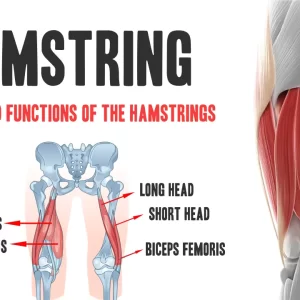Contents
Cardiovascular diseases (CVDs) are a leading cause of death worldwide, and regular exercise plays a crucial role in reducing this risk and promoting overall heart health. Understanding the difference between aerobic and anaerobic exercise is essential for creating an effective fitness plan—especially when it comes to protecting and improving your heart health. While both forms of exercise support the cardiovascular system, they impact the body in different ways.
This article explores the physiological differences, benefits, and risks of each exercise type and provides evidence-based guidance on which is best for heart health.
What is Aerobic Exercise?
Aerobic exercise is any activity that uses large muscle groups and can be sustained over time while keeping the heart rate elevated. The term “aerobic” means “with oxygen,” indicating that these exercises rely on oxygen to generate energy.
Examples:
- Walking
- Jogging
- Cycling
- Swimming
- Rowing
- Dancing
Physiological Effects:
- Increases heart and lung capacity
- Enhances oxygen transport and utilization
- Lowers resting heart rate
- Improves endurance and circulation
What is Anaerobic Exercise?
Anaerobic exercise involves short bursts of high-intensity effort where the body’s demand for oxygen exceeds supply, leading to energy production without oxygen.
Examples:
- Sprinting
- High-intensity interval training (HIIT)
- Weightlifting (Strength & Bodybuilding programs)
- Plyometrics
Physiological Effects:
- Increases muscle mass and strength
- Boosts metabolic rate
- Enhances glucose metabolism
- Improves short-term energy systems
Aerobic Exercise and Heart Health
Aerobic activity is widely recognized for its benefits to the cardiovascular system, especially when performed at moderate intensity for at least 150 minutes per week, as recommended by the American Heart Association.
Heart Health Benefits:
- Lowers blood pressure
- Reduces LDL (bad) cholesterol
- Raises HDL (good) cholesterol
- Enhances blood vessel elasticity
- Decreases resting heart rate and improves heart efficiency
- Reduces risk of coronary artery disease, stroke, and heart attack
Clinical Support: A 2020 meta-analysis published in the Journal of the American Heart Association found that aerobic exercise significantly reduces both systolic and diastolic blood pressure in adults with hypertension .
Anaerobic Exercise and Heart Health
While anaerobic exercise is often associated with muscle building, it also provides cardiovascular benefits—especially when performed regularly and safely.
Heart Health Benefits:
- Improves glucose metabolism and insulin sensitivity
- Supports vascular function through increased nitric oxide production
- May improve stroke volume (amount of blood pumped per heartbeat)
- Enhances cardiac resilience during short, high-stress events
Clinical Support: Research in the European Journal of Preventive Cardiology indicates that resistance training can reduce cardiovascular risk factors such as abdominal fat, high blood glucose, and inflammation .
Aerobic vs. Anaerobic: Which is Better for Heart Health?
| Feature | Aerobic Exercise | Anaerobic Exercise |
|---|---|---|
| Energy system | Oxygen-based | Non-oxygen (glycolysis) |
| Intensity | Moderate, sustained | High, short bursts |
| Heart benefits | Improves heart and lung capacity | Enhances heart strength under stress |
| Blood pressure | Significantly reduced | Mild-to-moderate reductions |
| LDL/HDL profile | Improved lipid profile | Slight improvements |
| Recommended duration | ≥150 min/week | 2–3 sessions/week (non-consecutive) |
Best Approach: Combine Both
Combining aerobic and anaerobic exercises provides the most comprehensive cardiovascular support. Aerobic workouts improve heart endurance, while anaerobic efforts enhance heart strength and resilience. This mixed approach is often referred to as concurrent training and is supported by current guidelines for heart disease prevention.
How to Structure Your Routine
- Beginner goal: 30 min of brisk walking 5 days/week + 2 short bodyweight strength sessions.
- Intermediate goal: 3–4 days of aerobic exercise (running, swimming) + 2–3 days of strength or HIIT.
- Advanced goal: Integrate moderate aerobic days with HIIT and progressive resistance training.
Note: Always consult your doctor before starting any new high-intensity or resistance program—especially if you have cardiovascular risk factors.
Conclusion
Both aerobic and anaerobic exercises benefit the heart in different but complementary ways. Aerobic training remains the gold standard for improving cardiovascular endurance and reducing disease risk, while anaerobic training helps build a stronger, more resilient heart and body. For optimal heart health, incorporate both types of training in a balanced and sustainable fitness regimen.
References
- Cornelissen, V.A., & Smart, N.A. (2013). Exercise training for blood pressure: A systematic review and meta‐analysis. Journal of the American Heart Association. https://www.ahajournals.org/doi/10.1161/JAHA.113.004473
- Cornelissen, V., Fagard, R. (2005). Effects of resistance training on blood pressure and other cardiovascular risk factors. European Journal of Preventive Cardiology. https://journals.sagepub.com/doi/10.1097/01.hjr.0000173104.47990.9e
- American Heart Association. Recommendations for Physical Activity in Adults and Kids. https://www.heart.org



